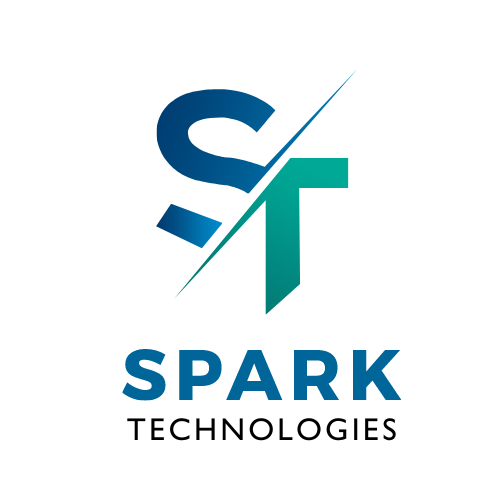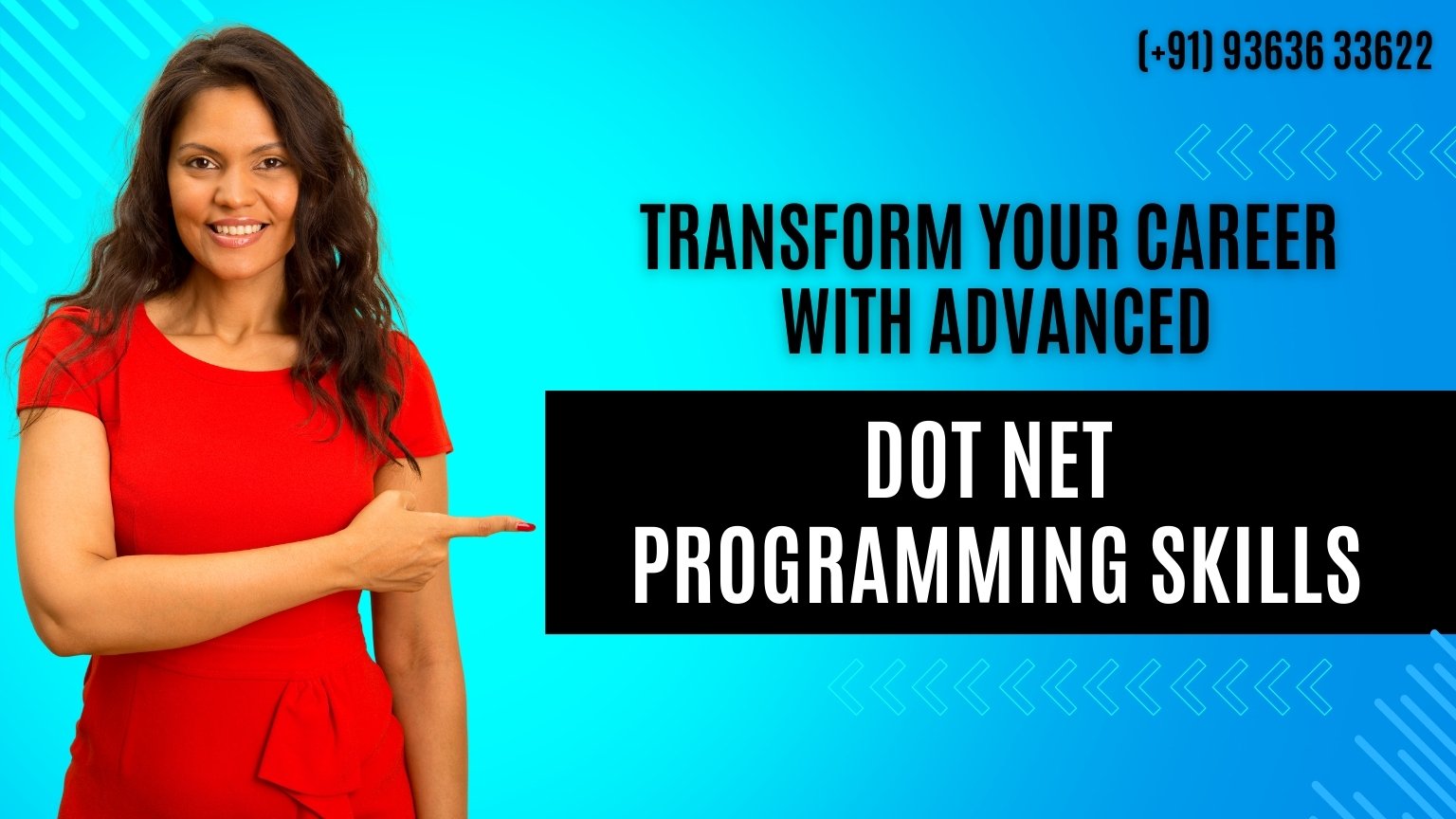
Front End Development Course in Chennai
What is Front-End Development Course?
Spark Technologies provides the best Front End Developer course in Chennai. We are the top-notch Front End Developer training institute in Chennai. Our extensive programs prepare students and professionals with an in-depth understanding of front-end developer classes and get them a well-paying job as front end Developers.
Course Highlights
- ✔ Skillfully crafted front-end web developer course curriculum designed to meet global standards in the industry.
- ✔ The courseware, created by industry experts, provides a comprehensive understanding of key front-end web developer concepts such as HTML, CSS, CMS, and HTML5.
- ✔ Learn front-end web development in Chennai from expert trainers with profound experience in the field.
- ✔ Comprehensive front-end web development in Chennai will equip you with the complete process.
- ✔ Join our interactive front-end developer course at Spark Technologies for a technically enhanced classroom experience.
- ✔ Our courses provided a professional learning experience at a nominal fee structure with certification upon completion.
- ✔ Spark Technologies provides 100% job assurance for all participants who have completed the front-end development course.
- ✔ Our dedicated placement portal aids students in landing
Front End Developer Course Objectives
- ✔ Learn the fundamentals of HTML and CSS to create well-structured and visually appealing web pages.
- ✔ Understand the core concept of Javascript programming to add interactive and dynamic content to websites.
- ✔ Learn how to create responsive and mobile-friendly websites using frameworks such as Bootstrap.
- ✔ Gain hands-on experience manipulating the document object model using JavaScript to update web content dynamically.
- ✔ Explore front-end frameworks like React, Angular, or Vue.js to build interactive and dynamic web applications.
- ✔ Learn strategies for testing and debugging front end code to ensure the functionality and reliability of web applications.
- ✔ Apply your skills to real word projects to build a portfolio that showcases your proficiency as a front end developer.
Course Syllabus
Front end development is the art of crafting user experiences on the web. It involves creating interactive interfaces using languages like HTML, CSS, and JavaScript. Front end developers focus on how websites look and behave, ensuring seamless navigation and engaging visuals to enhance user satisfaction and interaction.
- Introduction To HTML5
- Limitations of HTML4
- Introduction and Advantages of HTML5
- First HTML5 Document
- Overview of New Features of HTML5
- Page Layout Semantic Elements
- Header
- Navigation
- Section & Articles
- Footer
- Aside and more
- Form Elements And Attributes
- New Input Types
- New Elements in Form
- New Attributes in Form Tag
- New Attributes in <input> Tag
- Working With Canvas
- Coordinates
- Path and Curves
- Drawing Lines, Rectangles, and Circles
- Text and Font
- Color Gradations
- Drawing Images
- Scalable Vector Graphics (SVG)
- Understanding SVG
- Benefits of SVG
- Using SVG Tag
- Comparing with Canvas
- Media – Audio And Video
- Audio and Source tags
- Video and Source tags
- Track tag
- Mime types supported
- Browser Compatibility
- Programming using Javascript
- Drag And Drop
- Drag and Drop Events
- Programming using JavaScript
- Web Storage
- Overview
- Local Storage
- Session Storage
- Browser Compatibility
- HTML APIs
- HTML Geolocation
- HTML Drag/Drop
- HTML Web Storage
- HTML Web Workers
- Working With CSS3
- Introduction to CSS3
- Selectors
- Box Model
- CSS3 Borders
- Working with border-radius
- Working with box-shadow
- Working with border-image
- CSS3 Backgrounds
- Background-size
- Background-origin
- CSS3 Gradients
- Linear Gradients
- Radial Gradients
- CSS3 Text Effects
- Text
- -shadow
- Word
- -wrap
- CSS3 Web Fonts
- Creating custom fonts
- Font Descriptors
- CSS3 2D Transforms
- Working with translate
- Working with rotate
- Working with scale
- Working with skew
- Working with matrix
- CSS3 3D Transforms
- Working with rotateX
- Working with rotateY
- CSS3 Transitions And Animations
- Working with Animations
- Working with Transitions
- JS Introduction
- JS Where To
- JS Output
- JS Statements
- JS Syntax
- JS Comments
- JS Variables
- JS Operators
- JS Arithmetic
- JS Assignment
- JS Data Types
- JS Functions
- JS Objects
- JS Scope
- JS Events
- JS Strings
- JS String Methods
- JS Numbers
- JS Number Methods
- JS Math
- JS Random
- JS Dates
- JS Date Formats
- JS Date Methods
- JS Arrays
- JS Array Methods
- JS Array Sort
- JS Booleans
- JS Comparisons
- JS Conditions
- JS Switch
- JS Loop For
- JS Loop While
- JS Break
- JS Type Conversion
- JS Bitwise
- JS RegExp
- JS Errors
- JS Debugging
- JS Hoisting
- JS Strict Mode
- JS Style Guide
- JS Best Practices
- JS Mistakes
- JS Performance
- JS Reserved Words
- JS Versions
- JS JSON
- JS Forms
- JS Forms
- Forms API
- JS Objects
- Object Definitions
- Object Properties
- Object Methods
- Object Constructors
- Object Prototypes
- JS Functions
- Function Definitions
- Function Parameters
- Function Invocation
- Function Call
- Function Apply
- Function Closures
- JS HTML DOM
- DOM Intro
- DOM Methods
- DOM Document
- DOM Elements
- DOM HTML
- DOM CSS
- DOM Animations
- DOM Events
- DOM Event Listener
- DOM Navigation
- DOM Nodes
- DOM Collections
- DOM Node Lists
- JS Browser BOM
- JS Window
- JS Screen
- JS Location
- JS History
- JS Navigator
- JS Popup Alert
- JS Timing
- JS Cookies
- JS AJAX
- AJAX Intro
- AJAX XMLHttp
- AJAX Request
- AJAX Response
- AJAX XML File
- AJAX PHP AJAX ASP
- AJAX Database
- AJAX Applications
- AJAX Examples
- JS JSON
- JSON Intro
- JSON Syntax
- JSON vs XML
- JSON Data Types
- JSON Objects
- JSON Arrays
- JSON Parse
- JSON Stringify
- JSON PHP
- JSON HTML
- JSON
- JSONP
- JS
- Examples
- JS Examples
- JS HTML DOM
- JS HTML Input
- JS HTML Objects
- JS HTML Events
- JS Browser
Introduction
- Javascript Resource
- ECMAScript Language Specification
- Course Plan
Scope
- Scope and the JavaScript Compiler
- Compiling Function Scope
- Execution of Function Code
- Scope and Execution Example
- Function Declarations, Function Expressions, and Block Scope
- Lexical Scope
- Cheating Lexical Scope: eval
- IIFE Pattern
- IIFE Pattern Questions
- Block Scope in ES6
- Problems with the Let Keyword
- Dynamic Scope
- Quiz: Scope
- Hoisting
- Exercise 1: Solution
- This Keyword
- Binding Confusion
- Explicit Binding
- The New Keyword
- Quiz: this
Closure
- Closures
- Closure Examples
- More Closure Examples
- Module Patterns
- Quiz: Closure
- Exercise 2
- Exercise 2 Solution
Object Orienting
- Prototype
- Prototypes Explained, Part 1
- Prototypes Explained, Part 2
- Prototype Linkages
- Prototype: Objects Linked
- Linked Prototype Diagram
- Quiz: Prototype Behavior
- Exercise 3
- Exercise 3: Solution
Inheritance
- OLOO
- OLOO Questions
- Quiz: Prototype Unit
- Exercise 4
- Exercise 4 Solution
Async Patterns
- Callbacks
- Solving Callback Problems
- Generators
- Promises
- sequence
- Quiz: Async Patterns
- Exercise 5
- Exercise 5 Solution
- Introduction
- What is Angular
- The Architecture of Angular Apps
- Setting Up the Development Environment
- Your First Angular App
- Structure of Angular Projects
- Webpack
- Angular Version History
- Quiz 1: Angular Basics
- Introduction
- What is TypeScript?
- Your First TypeScript Program
- Declaring Variables
- Types
- Type Assertions
- Arrow Functions
- Interfaces
- Classes
- Objects
- Constructors
- Access Modifiers
- Access Modifiers in Constructor Parameters
- Properties
- Modules
- Exercise
- Introduction
- Building Blocks of Angular Apps
- Components
- Generating Components Using Angular CLI
- Templates
- Directives
- Services
- Dependency Injection
- Generating Services Using Angular CLI
- Assignment 1: List of Authors
- Introduction
- Property Binding
- Attribute Binding
- Adding Bootstrap
- Class Binding
- Style Binding
- Event Binding
- Event Filtering
- Template Variables
- Two-way Binding
- Pipes
- Custom Pipes
- Assignment 2: Favorite Component
- Assignment 3: Title Casing
- Introduction
- Component API
- Input Properties
- Aliasing Input Properties
- Output Properties
- Passing Event Data
- Aliasing Output Properties
- Templates
- Styles
- View Encapsulation
- ngContent
- ngContainer
- Assignment 4: Like Component
- Introduction
- ngIf
- Hidden Property
- ngSwitchCase
- ngFor
- ngFor and Change Detection
- ngFor and Trackby
- The Leading Asterisk
- ngClass
- ngStyle
- Safe Traversal Operator
- Creating Custom Directives
- Assignment 5: Exercise: ZippyComponent
- Introduction
- Building a Bootstrap Form
- Types of Forms
- ngModel
- Adding Validation
- Specific Validation Errors
- Styling Invalid Input Fields
- Cleaner Templates
- ngForm
- ngModelGroup
- Control Classes and Directives
- Disabling the Submit Button
- Working with Checkboxes
- Working with Drop-down Lists
- Working with Radio Buttons
- Assignment 6: Course Form
- Introduction
- Building a Bootstrap Form
- Creating Controls Programmatically
- Adding Validation
- Specific Validation Errors
- Implementing Custom Validation
- Asynchronous Operations
- Asynchronous Validators
- Showing a Loader Image
- Validating the Form Input Upon Submit
- Nested FormGroups
- FormArray
- FormBuilder
- Quick Recap
- Assignment 7: Change Password Form
- Introduction
- JSONPlaceHolder
- Getting Data
- Creating Data
- Updating Data
- Deleting Data
- OnInit Interface
- Separation of Concerns
- Extracting a Service
- Handling Errors
- Handling Unexpected Errors
- Handling Expected Errors
- Throwing Application-specific Errors
- Handling Bad Request Errors
- Importing Observable Operators and Factory Methods
- Global Error Handling
- Extracting a Reusable Error Handling Method
- Extracting a Reusable Data Service
- The Map Operator
- Optimistic vs Pessimistic Updates
- Observables vs Promises
- Assignment 8: GitHub Followers Page
- Introduction
- Routing in a Nutshell
- Configuring Routes
- RouterOutlet
- RouterLink
- RouterLinkActive
- Getting the Route Parameters
- Why Route Parameters Are Observables
- Routes with Multiple Parameters
- Query Parameters
- Subscribing to Multiple Observables
- The SwitchMap Operator
- Programmatic Navigation
- Assignment 9: Blog Archives
- Introduction
- Application Overview
- Architecture
- JSON Web Tokens
- Starter Code
- Implementing Login
- Implementing Logout
- Showing or Hiding Elements
- Showing or Hiding Elements based on the User's Role
- Getting the Current User
- CanActivate Interface
- Redirecting Users After Logging In
- Protecting Routes Based on the User's Role
- Accessing Protected API Resources Quick Recap
- Introduction
- Preparing for Deployment
- JIT vs AOT Compilation
- Angular Compiler in Action
- Building Applications with Angular CLI
- Environments
- Adding Custom Environments
- Linting with Angular CLI
- Linting in VSCode
- Other Deployment Options
- Deploying to GitHub Pages
- Deploying to Firebase
- Heroku
- Deploying to Heroku
- Engines
Front End Web Developer Course Trainer Profile
Spark Technologies instructors are industry experts who impart job-oriented skills and expertise in web development concepts. They are real-time professionals who teach with cutting-edge technologies, enabling students to build real front-end web applications.
Our trainers enrich students’ knowledge with feature-rich application designs currently used in the industry. We provide personalized mentorship and hands-on training, guiding students through the entire front-end web development process.
Spark Technologies instructors also help students build resumes and boost their confidence through extensive interview preparation, including mock test sessions.
Features of Front-End Developer Training in Chennai at Spark Technologies
Real-Time Experts as Trainers:
At Spark Technologies, you will be taught by experts who are passionate about sharing their experiences with learners. You will benefit from personalized mentorship and guidance from these experts.
Live Projects:
Gain valuable experience by working on real-time projects at Spark Technologies. Showcase your project experience to increase your chances of being hired!
Certification:
Earn your certification from Spark Technologies and gain the skills to pass global certifications. Numerous students from Spark Technologies have achieved global certification, and all of them have successfully passed.
Affordable Fees:
Spark Technologies offers the best courses at an affordable price and the option to pay the fees in installments.
Flexibility:
At Spark Technologies, you have the best flexibility. Choose between classrooms or online training, early mornings or late evenings, weekdays or Weekends, regular packs or fast track—pick whatever suits you the best.
Placement Support:
Spark Technologies tie-ups and memorandums of Understanding with many small and medium companies. These partnerships provide opportunities to kick-start and advance your career.
Why Learn the Front End Web Developer Course in Chennai at Spark Technologies?
You can get the best quality front end web developer courses with our experienced professionals at an affordable fee. Our experts guide the students and place them in top companies with high salaries.
We are the top-notch Front end web developer Training Institute in Chennai. We aim to provide the best quality courses at a nominal price. We have placed numerous students in the best company with a good salary.
To join us or to learn more about the courses, contact us at 9965188111 or 9363633622 or mail us at admin@spark-technologies.in
Front End Developer Certification Training in Chennai
The Front End Web Development Course Certification is a credible document that confirms the learner has acquired in-depth knowledge of the Web Development process. Upon completing the course, participants gain practical experience through real-time Web Development projects, enhancing their skills and validating their expertise.
Spark Technologies Front End Developer Certification Courses in Chennai provide comprehensive training that equips participants with essential professional skills required for Web Developers.
Front End Developer Course Price in Chennai
The price of a Front End Developer course in Chennai may vary depending on the place, duration of the course, and other factors. Usually, the course price for Front End Developer is Rs 20,000 to Rs 75,000. You can get the best Java training from Spark Technologies in Chennai.
Placement Session & Job Opportunities after completing Front End Developer Training in Chennai
Being a Front End Developer stands out as a highly lucrative career option in the IT industry.
This is primarily because businesses of all sizes and types require a website to promote themselves and engage with their audience online.
Websites are crucial for businesses to stay competitive in today’s fast-paced world, making them a key asset for any business looking to establish a digital presence.
The increasing number of businesses transitioning to the online platform has led to a surge in demand for skilled Front End Web Developers.
Various industries such as the Software Industry, Banking Industry, Digital Marketing Industry, Mobile Application Development, Web Designing Companies, Advertisement Agencies, Manufacturing Agencies, Insurance Field, Medicine, and Healthcare Industry have witnessed a significant increase in the demand for Web Developers in recent times.
FAQs
Learn Front End Development for creative control, user interaction, responsive design, and dynamic website creation, enhancing career prospects.
Basic understanding of HTML, CSS, and JavaScript, and a passion for web design and development.
The Front End Developer course typically spans 8-12 weeks, with weekly classes held for a few hours.
Yes, you will receive a certificate verifying your completion of the Front End Developer Course, enhancing your career prospects.
Yes, job placement assistance is often provided to help you secure employment opportunities after completing the Front End Developer Course.
You will work on real-world projects, such as building responsive websites, creating interactive web applications, and implementing user-friendly interfaces.
Yes, the course is regularly updated to include the latest industry trends, tools, and advancements in Front End Development.
Yes, study materials and resources such as tutorials, documentation, and reference materials are typically provided to support your learning.
Yes, assistance with Front End Developer certification exams, including study guides and practice tests, is often provided to help you prepare.
Our course stands out for its hands-on projects, expert mentors, industry-aligned curriculum, and post-course job placement support.
You can enroll by visiting our website, filling out the registration form, and selecting a convenient batch schedule for the Front End Developer Classes.
The cost of Front End Developers ranges from Rs 20,000 to Rs 75,000 in Chennai.
Spark Technologies in Chennai is the best Front Development Training Institute.
Yes, Front End Development is an excellent choice for beginners as it provides a tangible way to start building websites and web applications.
Front End Development can be challenging at first, especially for beginners. It involves learning several technologies like HTML, CSS, JavaScript, and frameworks and libraries like React, Angular, or Vue.js.
Yes, learning Front End Development in 6 months is possible, especially if you dedicate enough time to studying and practicing regularly.
No news found!
- 1 Star0
- 2 Stars0
- 3 Stars0
- 4 Stars0
- 5 Stars0




